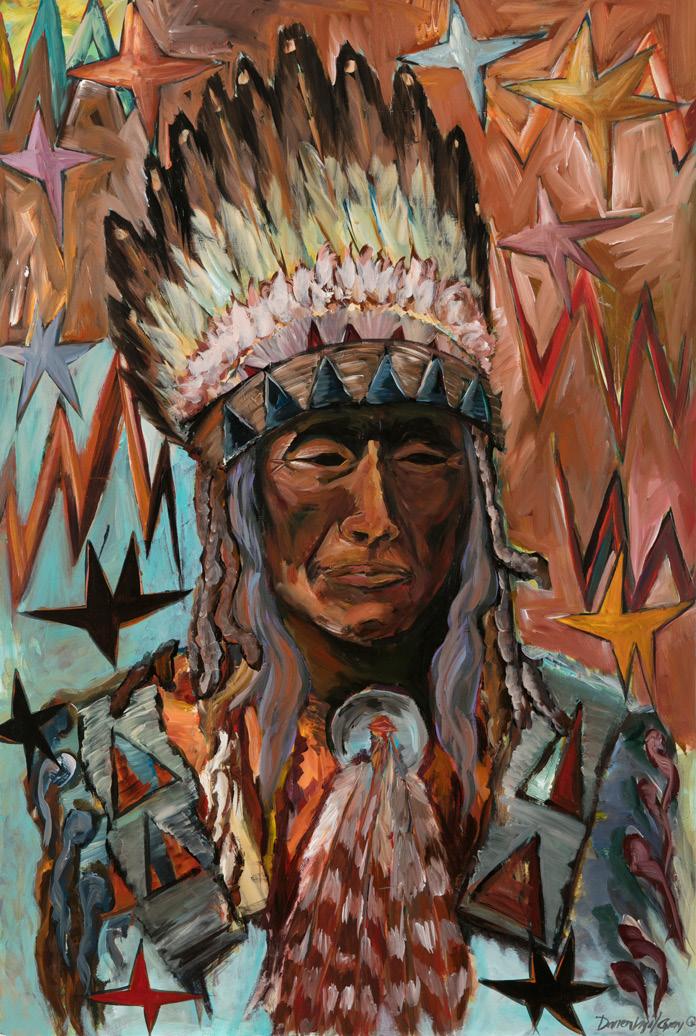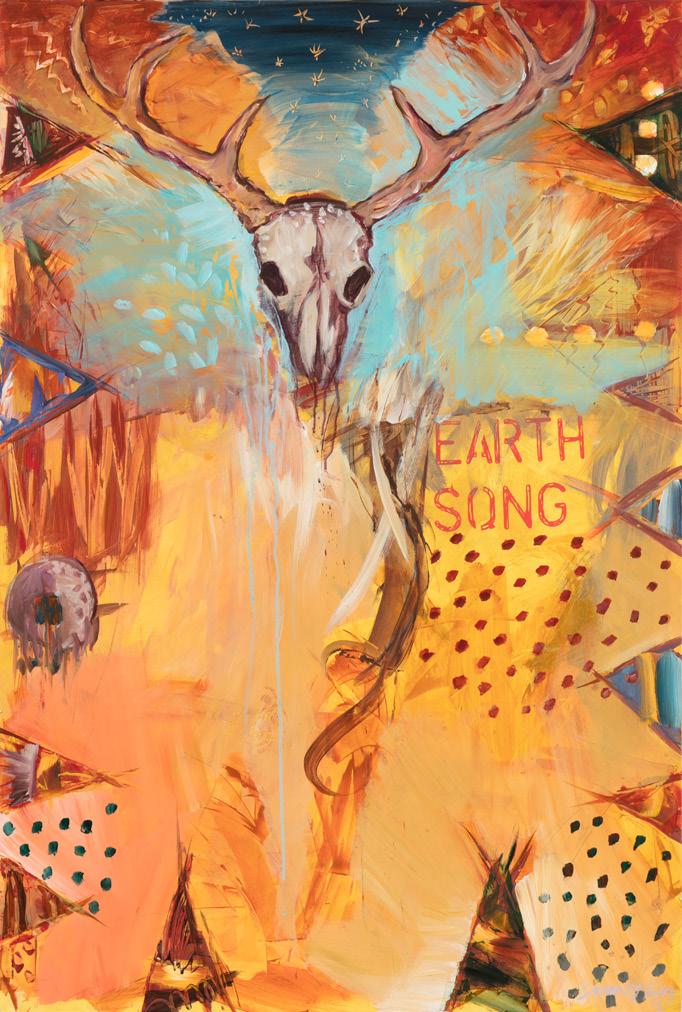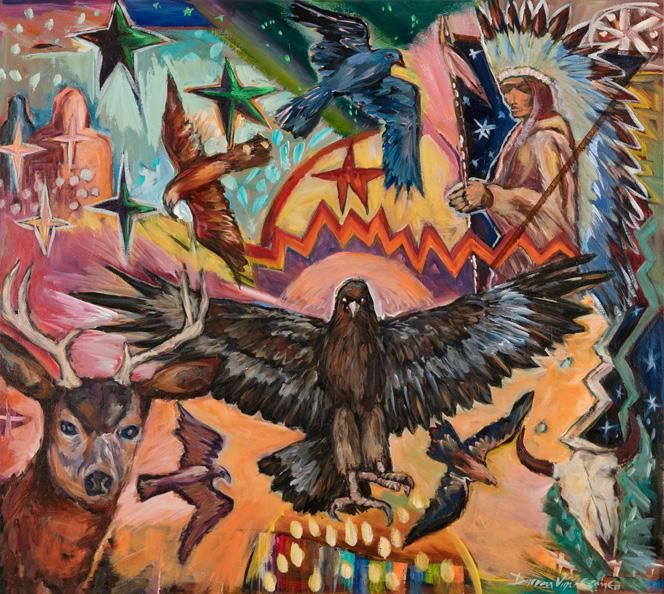
Darren Vigil Gray: A Song of Stars
August 8 - September 29, 2025

Peyton Wright Gallery is pleased to present “The Song Of Stars,” an exhibition of paintings by Jicarilla Apache artist and musician Darren Vigil Gray (b. 1959) in his first solo New Mexico exhibition in more than half a decade.
The exhibit commences on Friday, August 8, 2025, with an opening reception at 5 p.m., and continues through Tuesday, September 29.
Since the 1980s, Gray has been known for dynamic works that probe personal and tribal mythologies, portraiture, the broad landscape of northern New Mexico, and abstraction. Renowned critic and curator Lucy Lippard said of his work, “Gray has found his true place in the act of painting, in brushstrokes informed by dreams and visions that transcend the personal and the local.” Indeed, Gray’s paintings circumvent a strict tribal ethos while accessing the deep mythological current that runs through his psyche.
In the artist’s first exhibition at Peyton Wright Gallery in nearly a quarter century, recent as well as brand new paintings of landscapes and dreamscapes on canvas and paper will be featured - a collection that offers a glimpse into Gray’s unique aesthetic, drawn from his deep affinity with both his past and his present.
“I can vividly recall ceremonial dances and the designs on dancers’ dress, moving so gracefully to the drum - or the heartbeat, as we like to call it, “ Gray said. “In my youth I danced - and still dance - with a passion to this heartbeat, and I possess an acute sense of rhythm and movement. This rhythm was the guiding force that unlocked the creativity lying dormant in my soul. Depicting the land and its energetic sense with an emphasis on the valley still holds my fascination. I love painting landscapes; I understand the land’s secret beauty, its ancient history and my interconnectedness to it. This is the land of my people, the Jicarilla Apache.”
His visual aesthetic also draws mightily on intuition and “blood memory,” a term coined by the Pulitzer Prize-winning novelist and Gray’s fatherin-law, N. Scott Momaday. For Gray, “blood memory” is more than a touchstone – it is a wormhole through which his vivid dreams and visions have allowed access to a distinct mythic realm. Momaday has referred to it as the ability to “remember things beyond our corporeal existence.”
In the studio, Gray approaches the canvas without preconception, working spontaneously to locate content, imagery, and an active color dialogue within the process. This sense of immediacy is critical to his practice, and he proceeds on the canvas as if divining imagery from a separate reality or another time and place. Like a conduit between parallel worlds, his improvisations often conjure a symbolism that is both intrinsic and mystical.
“When I approach a blank two-dimensional canvas, I am always full of excitement and anticipation,” Gray said. “I usually take the time to light my sage bundle and beckon spirit to enter my workplace. This is a simple process that helps ground me in my search for an image.

I never know ing to remove
Gray ultimately arriving at a two worlds of the natural.
In this aspect, ation.

know what may take place, whether I’ll be trying to soften the curve on a woman’s body or attemptremove a grin off a mysterious figure’s face. I rely heavily on chance and creating chaos.”
ultimately combines his vision, ancestry and methodology with the cumulative history of painting, a place that speaks of power, determination and emotional response. He ventures to confront the in which he exists, keeping one foot in the modern world without compromising the elements natural.
aspect, he is the mediator between the earthly realm of paint, and the unearthly realm of artistic cre-
Darren Vigil Gray grew up among the mountains and mesas of Dulce, New Mexico on the Jicarilla Apache reservation. His father was the tribal chairman as well as a country western guitarist (performing in a band called the Apache Red Vests), rancher, and rodeo cowboy; his mother studied to be a coloratura soprano, and encouraged Gray and his brother to learn piano and drums. Music would always remain a part of his future, noting that “music and art are inextricably linked.”
At age 15 he begged his mother to let him leave the reservation to attend Santa Fe’s Institute of American Indian Arts and graduated in 1977. He was exposed to the work of Fritz Scholder and T.C. Cannon, the latter of whom became Gray’s mentor, who provided the young artist with a lifelong mantra: “create your own mythology.” He went on to study art at the College of Santa Fe (1978- 1979) and the University of New Mexico (1985-1986).
Gray has always been a dedicated musician, with such keen drumming skills that he has been invited to perform across parts of the country and abroad. This affinity between the visual and the aural has deepened his understanding of both genres while introducing him to many of the most gifted musicians of our time.
Some four decades ago, he managed to arrange a meeting with the famed guitarist, songwriter, and producer, Robbie Robertson, at a Hamburger Hamlet in Brentwood. After sharing a few Coronas on a hot California day, they ventured to Gray’s powder-blue Toyota flatbed where he pulled out a few new paintings. Robertson was so impressed that he purchased one right there in the parking lot, and their lifelong friendship was born. Since then, his art has been highly prized by myriad guitarists, singers and songwriters, many of whom have become not only collectors but devoted friends.
Gray has had numerous solo exhibitions, including Peyton Wright Gallery, Santa Fe; Keyes Fine Arts, Sag Harbor, New York; Wheelwright Museum, Santa Fe (including a 20 year retrospective in 2002); Orenda Art International, Paris, France; The Common Ground, New York, New York; and The Santa Fe Gallery, London, England, among others.
He has participated in group exhibitions at Lincoln Center forthe Performing Arts, Avery Fisher Hall, New York City, New York; Zimmerli Art Museum, Rutgers University, New Brunswick, New Jersey; and the Musee de l’Homme, Paris, France.
Gray’s work is represented in the collections of numerous public and private institutions including the Denver Art Museum, CO; Tucson Museum of Art, AZ; Gilcrease Museum, OK; Bruce Museum, CT; Heard Museum, Phoenix,; The Wheelwright Museum, Santa Fe; National Museum of American Arts, Washington, D.C.; Institute of American Indian Arts, Santa Fe; Museum of the American Indian, Heye Foundation, New York, New York; Museum of the American West, Sun Valley, Idaho; Museum of Mankind, Vienna, Austria; Norman Mackenzie Museum, University of Regina, Regina, Saskatchewan; and the Stamford Museum, Stamford, Connecticut, among others.
(above source materials include personal interviews w/artist; Keyes Fine Arts, Sag Harbor, NY; others)

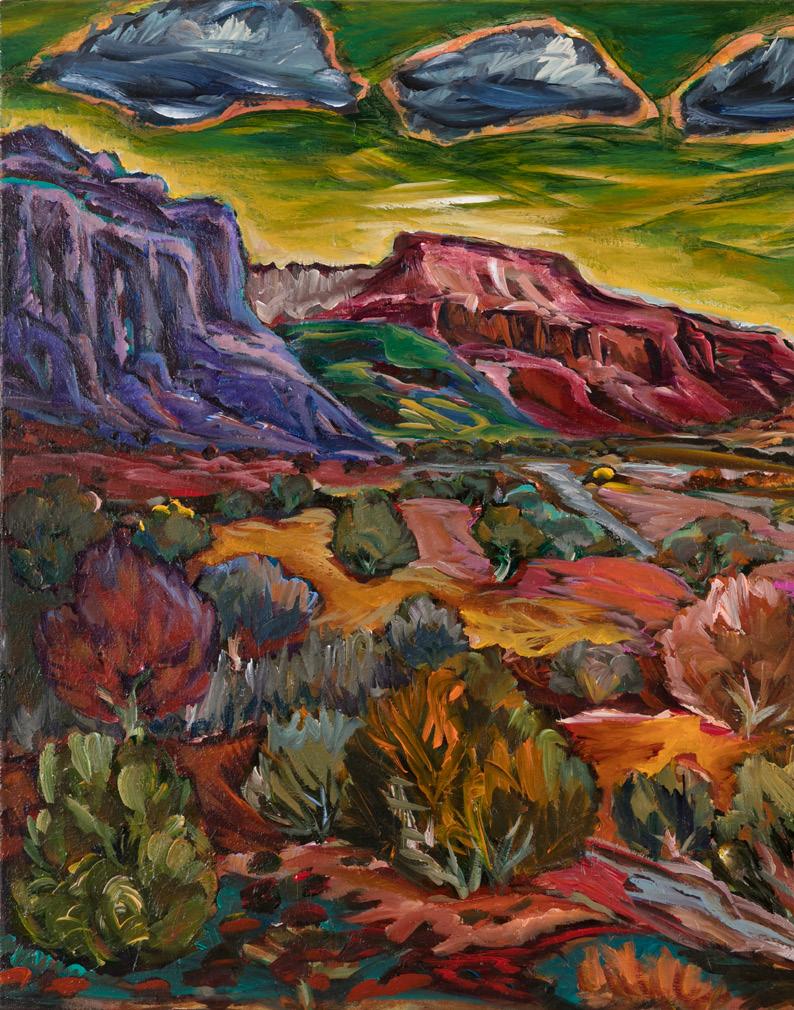
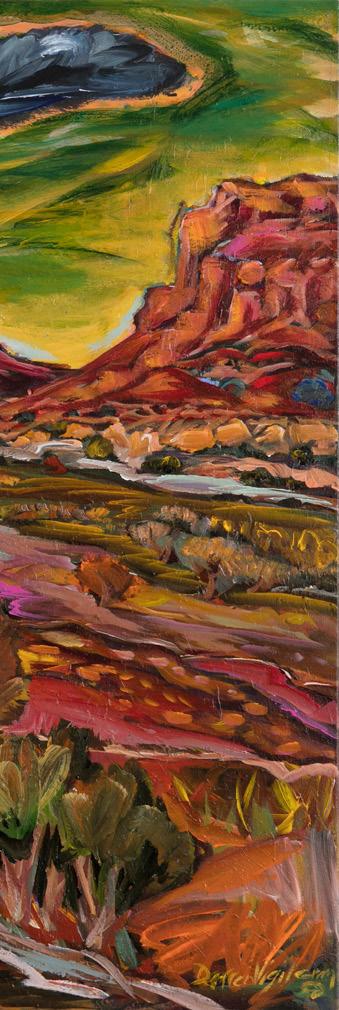
Self-Portrait with the Moon, 2025




Shifting of the Ages #1, 2018



